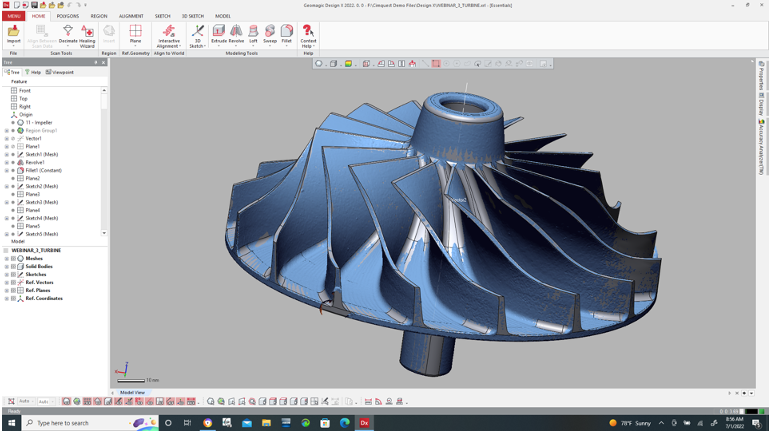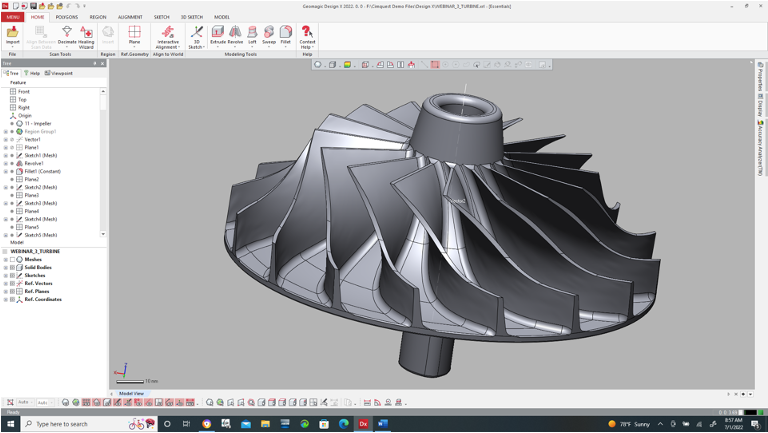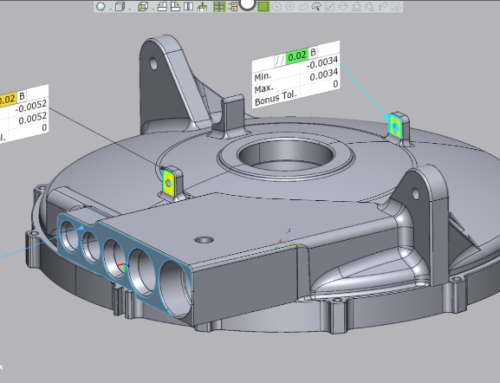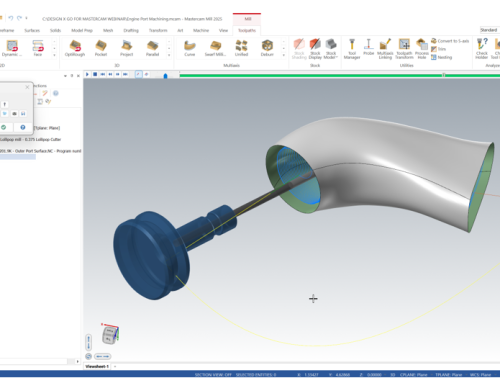Design X is a remarkable product that enables the creation of a fully-featured CAD model from a scan or point cloud from any device that can produce one of these files. It can return planes, sketches with constraints, dimensions, features, and can generally build completely native, history-based CAD models for a variety of the most common CAD systems including Solidworks, Solid Edge, Inventor, Pro-e, Creo, and NX.
Today, the requirements for a fully native CAD model with history are somewhat less important than they were many years ago when most CAD systems were only history-based. CAD systems that were formally history-based now offer “Direct Modeling” tools or have released new versions of the product that support both Direct as well as history-based Modeling. This makes neutral and Kernel file formats such as Step, VDA, Parasolid, and ACIS just as productive for these modelers as history-based models.
Introducing Design X Essentials
Design X Essentials is half the price of Design X but still includes the vast majority of modeling tools that make Design X such an incredible system. While the transfer of a fully native, history-based model into a product like Solidworks isn’t part of Design X Essentials, it could still create Step or Parasolid files to import into a history-based (only) modeler. The imported model would react like any other CAD modeler had exported the Step or Parasolid file.
And for direct modelers, a Step or Parasolid model is exactly what is required to offer an editable model that may be used in an assembly, modified, used for drafting applications, and so on.
Design X Essentials provides the vast majority of the Design X power at ½ the price and generates fully usable neutral and Kernel models suitable for essentially any CAD, CAM, or FEA system.
Please contact Joel Pollet of Cimquest for any additional information.







Leave A Comment